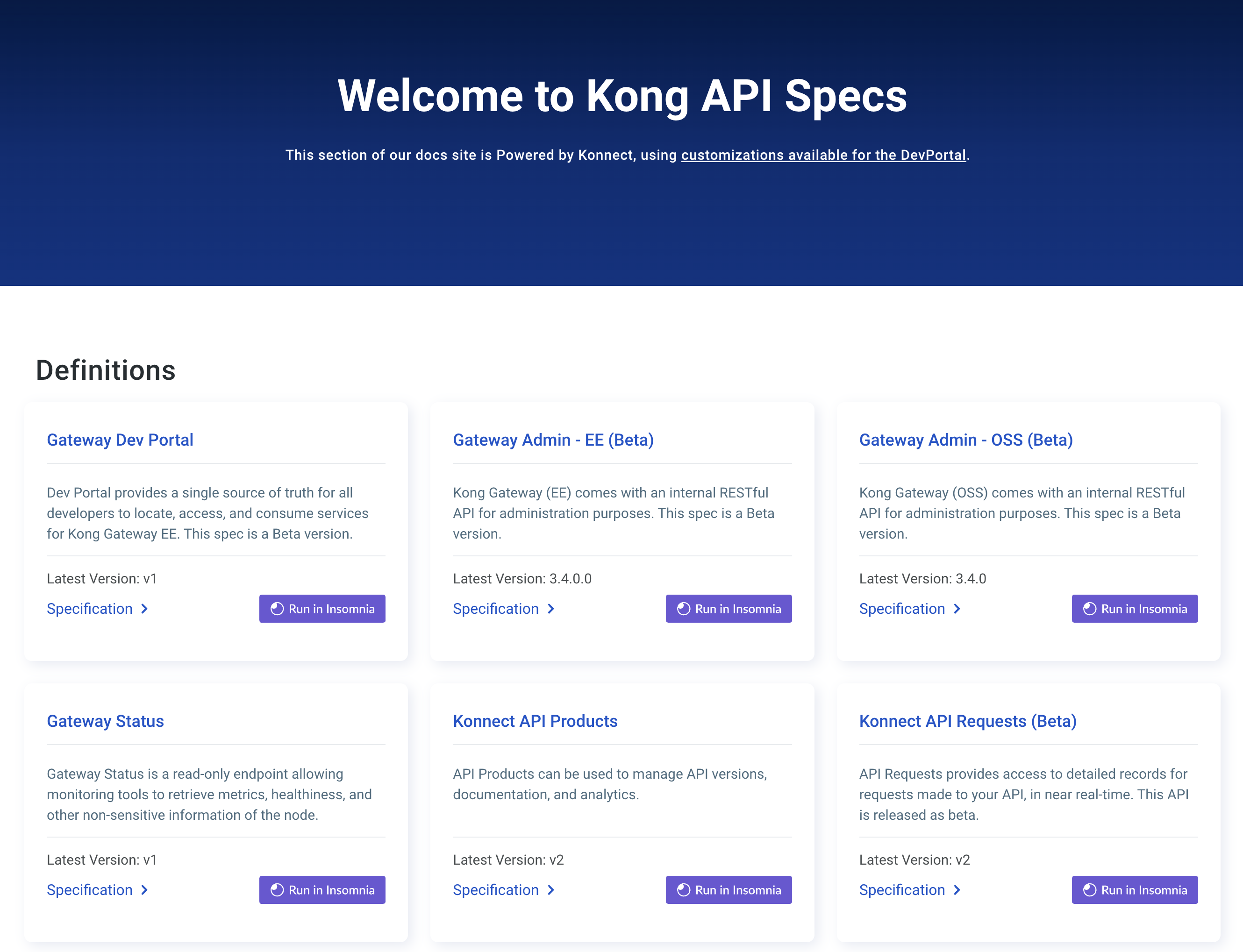このページは、まだ日本語ではご利用いただけません。翻訳中です。
Looking for the plugin's configuration parameters? You can find them in the Kafka Upstream configuration reference doc.
This plugin transforms requests into Kafka messages in an Apache Kafka topic. For more information, see Kafka topics.
Kong also provides a Kafka Log plugin for publishing logs to a Kafka topic. See Kafka Log.
Note: This plugin has the following limitations:
- This plugin does not support message compression.
- Kong Gateway does not support Kafka 4.0.
Enable on a service-less route
curl -X POST http://localhost:8001/routes/my-route/plugins \
--data "name=kafka-upstream" \
--data "config.bootstrap_servers[1].host=localhost" \
--data "config.bootstrap_servers[1].port=9092" \
--data "config.topic=kong-upstream" \
--data "config.timeout=10000" \
--data "config.keepalive=60000" \
--data "config.forward_method=false" \
--data "config.forward_uri=false" \
--data "config.forward_headers=false" \
--data "config.forward_body=true" \
--data "config.producer_request_acks=1" \
--data "config.producer_request_timeout=2000" \
--data "config.producer_request_limits_messages_per_request=200" \
--data "config.producer_request_limits_bytes_per_request=1048576" \
--data "config.producer_request_retries_max_attempts=10" \
--data "config.producer_request_retries_backoff_timeout=100" \
--data "config.producer_async=true" \
--data "config.producer_async_flush_timeout=1000" \
--data "config.producer_async_buffering_limits_messages_in_memory=50000"
Implementation details
This plugin uses the lua-resty-kafka client.
When encoding request bodies, several things happen:
- For requests with a content-type header of
application/x-www-form-urlencoded,multipart/form-data, orapplication/json, this plugin passes the raw request body in thebodyattribute, and tries to return a parsed version of those arguments inbody_args. If this parsing fails, an error message is returned and the message is not sent. - If the
content-typeis nottext/plain,text/html,application/xml,text/xml, orapplication/soap+xml, then the body will be base64-encoded to ensure that the message can be sent as JSON. In such a case, the message has an extra attribute calledbody_base64set totrue.
TLS
Enable TLS by setting config.security.ssl to true.
mTLS
Enable mTLS by setting a valid UUID of a certificate in config.security.certificate_id.
Note that this option needs config.security.ssl set to true.
See Certificate Object
in the Admin API documentation for information on how to set up Certificates.
SASL Authentication
To use SASL authentication, set the configuration option config.authentication.strategy to sasl.
Make sure that these mechanism are enabled on the Kafka side as well.
This plugin supports the following authentication mechanisms:
-
PLAIN: Enable this mechanism by setting
config.authentication.mechanismtoPLAIN. You also need to provide a username and password with the config optionsconfig.authentication.userandconfig.authentication.passwordrespectively. -
SCRAM: In cryptography, the Salted Challenge Response Authentication Mechanism (SCRAM) is a family of modern, password-based challenge–response authentication mechanisms providing authentication of a user to a server. The Kafka Upstream plugin supports the following:
-
SCRAM-SHA-256: Enable this mechanism by setting
config.authentication.mechanismtoSCRAM-SHA-256. You also need to provide a username and password with the config optionsconfig.authentication.userandconfig.authentication.passwordrespectively. -
SCRAM-SHA-512: Enable this mechanism by setting
config.authentication.mechanismtoSCRAM-SHA-512. You also need to provide a username and password with the config optionsconfig.authentication.userandconfig.authentication.passwordrespectively.
-
-
Delegation Tokens: Delegation Tokens can be generated in Kafka and then used to authenticate this plugin.
Delegation Tokensleverage theSCRAM-SHA-256authentication mechanism. ThetokenIDis provided with theconfig.authentication.userfield and thetoken-hmacis provided with theconfig.authentication.passwordfield. To indicate that a token is used you have to set theconfig.authentication.tokenauthsetting totrue.Read more on how to create, renew, and revoke delegation tokens.
Quickstart
The following steps assume that Kong Gateway is installed and the Kafka Upstream plugin is enabled.
Note: We use
zookeeperin the following example, which is not required or has been removed on some Kafka versions. Refer to the Kafka ZooKeeper documentation for more information.
-
Create a
kong-upstreamtopic in your Kafka cluster:${KAFKA_HOME}/bin/kafka-topics.sh --create \ --zookeeper localhost:2181 \ --replication-factor 1 \ --partitions 10 \ --topic kong-upstream -
Create a Service-less Route, and add the
kafka-upstreamplugin to it:curl -X POST http://localhost:8001/routes \ --data "name=kafka-upstream" \ --data "hosts[]=kafka-upstream.dev"curl -X POST http://localhost:8001/routes/kafka-upstream/plugins \ --data "name=kafka-upstream" \ --data "config.bootstrap_servers[1].host=localhost" \ --data "config.bootstrap_servers[1].port=9092" \ --data "config.topic=kong-upstream" -
In a different console, start a Kafka consumer:
${KAFKA_HOME}/bin/kafka-console-consumer.sh \ --bootstrap-server localhost:9092 \ --topic kong-upstream \ --partition 0 \ --from-beginning \ --timeout-ms 1000 -
Make sample requests:
curl -X POST http://localhost:8000 --header 'Host: kafka-upstream.dev' foo=barYou should receive a
200 { message: "message sent" }response, and should see the request bodies appear on the Kafka consumer console you started in the previous step.












